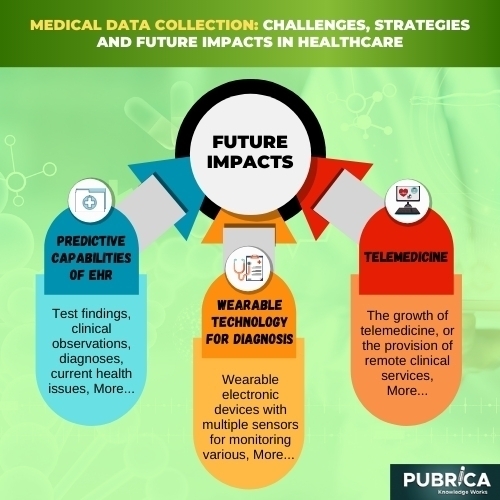
Benefits of copyediting in manuscript writing
March 22, 2021
Use of GPP3 for ethical guidance
April 1, 2021In brief:
- While each industry has its own regulatory and governance challenges when it comes to data collection, storage, and management, the struggles of the healthcare industry are unique.
- Often times, the data collected in healthcare is complex and is governed by extremely stringent regulations.
- Most healthcare data collection companies using a variety of forms such as patient intake forms, consent forms, treatment evaluation and health assessment forms among others.
- Once this data is collected, it typically goes through a process of manual data entry so the information can be available in the backend customer relationship management systems (CRM), electronic health record systems and shared among providers. Pubrica provides data collection and analysis help and have a look on this blog to know more about data analytics
Introduction:
The best examples of how data monitoring and analysis improve the country can be found in the healthcare sector. The need to solve both local organisational issues, such as reducing workloads and rising profits for a medical agency, and global problems, such as predicting epidemics and fighting existing diseases more effectively, drives the use of Big Data in medicine. Health systems should use data collection services to develop holistic views of patients, personalise treatments, advance treatment strategies, improve communication between doctors and patients, and improve health outcomes.
Why Is Data Collection Important?
The systematic process of collecting, analysing, and interpreting various kinds of information from various sources is known as data collection. In general, data collection is carried out for research purposes in order to gain a comprehensive understanding of a topic and lay a foundation for decision-making.
Future Impacts:
Predictive Capabilities of EHR
EHR’s Predictive Capabilities An electronic health record (EHR) is a system that gathers data about a patient’s health from various sources. Test findings, clinical observations, diagnoses, current health issues, medications taken by the patient, procedures he or she underwent, and so on are all part of an EHR.
This type of medical card will send alerts to patients about the need for a new test or to ensure that drug prescriptions are being followed. This is a great example of predictive analytics in action in the healthcare industry. Doctors can create a link between fundamentally different symptoms, provide an accurate diagnosis, and provide appropriate treatment by utilising a range of data from digital medical records. The security and comprehensiveness of patient information are the two major advantages of an EHR.
Wearable Technology for Diagnosis
Wearable electronic devices, or gadgets with multiple sensors for monitoring various activities and conditions of the human body, are quickly growing in popularity. Wearables can even send data to a personal physician, making them excellent data collection tools in healthcare.
Petabytes of data collected from a large number of patients will help to build ever-growing databases that will be analysed by artificial intelligence algorithms to identify relationships between metrics and diseases. Doctors will be able to diagnose illnesses earlier and recommend the best treatment options, if not completely prevent them.
Wearable devices, in combination with analytical systems, are an unavoidable part of modern resuscitation units, where patients with serious illnesses are at risk of rapidly deteriorating health. Predictive analytics can help ensure the safety of such patients by alerting medical personnel immediately and ensuring that critical information is not overlooked during treatment.
Telemedicine
The growth of telemedicine, or the provision of remote clinical services, is another example of the importance of data quality in healthcare. Primary diagnostics and consultations, as well as regular monitoring of the patient’s health status and even surgical assistance, are all included in this term.
Telemedicine has been around for decades, but it is only now that it has reached its full potential, thanks to the introduction of smartphones, wireless portable devices, and video conferencing.
Telemedicine lowers the cost of medical services by reducing the need for the patient’s physical presence in the clinic. It also prevents the patient’s health from deteriorating. A qualified consultation should occur at any time and in any location that is convenient for both the patient and the physician.
Healthcare Data Collection Strategies:
Questionnaires, observations, and document examination are all examples of healthcare data collection techniques. Today, most information is collected through digital channels and a plethora of apps available on the market using market research service.
A medical organisation should consider the following factors when selecting hospital data collection solutions:
- Provided services
- The number of doctors and patients who backed the cause
- Tools and infrastructure already in place
- Budgeting

The most popular tools for gathering medical information include:
- CRM stands for customer relationship management system, which generates and manages general data, generates reports, and analyses various issues.
- Electronic health record (EHR) systems collect and analyse personal patient data in order to generate deeper insights.
- Mobile applications are pieces of software that run on mobile devices and connect clinicians and patients, as well as aggregate and access data from a variety of databases.
- There are also development options: you can either build custom software from the ground up or use one of the many ready-made solutions available. It all depends on your unique situations and goals using medical data collection services.
Conclusion:
Health-care systems strive for a patient-centered approach that ensures a positive member experience, therapy adherence, timely and ongoing patient engagement to provide important health information, and regular internal reporting on the quality and cost of care. To meet these often conflicting goals, all interested stakeholders must have access to reliable data and up-to-date information in a timely and compliant manner. In this area, data-driven applications are making progress, allowing health-care organisations to convert massive amounts of data into enterprise assets, resulting in better patient care and cost management. Pubrica provides health data collection support
References:
- Dash, S., Shakyawar, S. K., Sharma, M., & Kaushik, S. (2019). Big data in healthcare: management, analysis and future prospects. Journal of Big Data, 6(1), 1-25.
- Rudrapatna, V. A., & Butte, A. J. (2020). Opportunities and challenges in using real-world data for health care. The Journal of clinical investigation, 130(2), 565-574.
